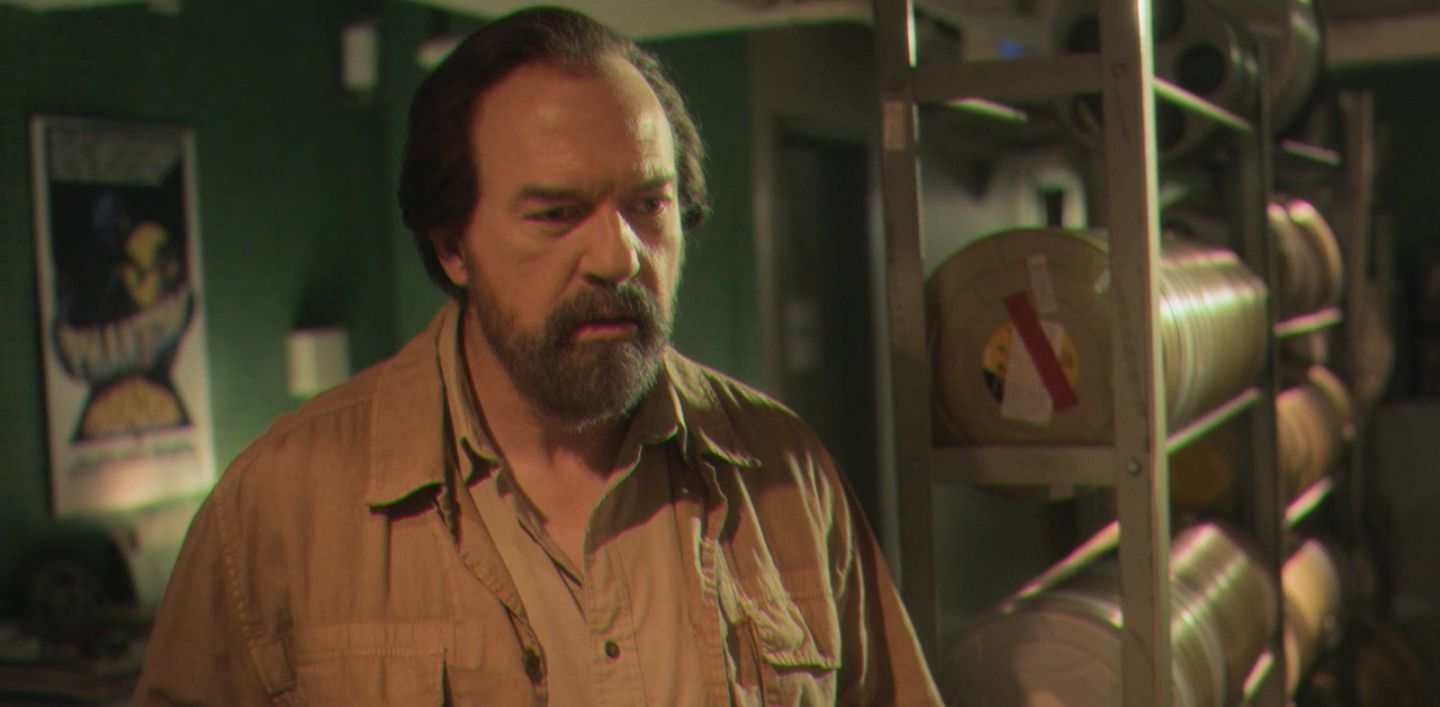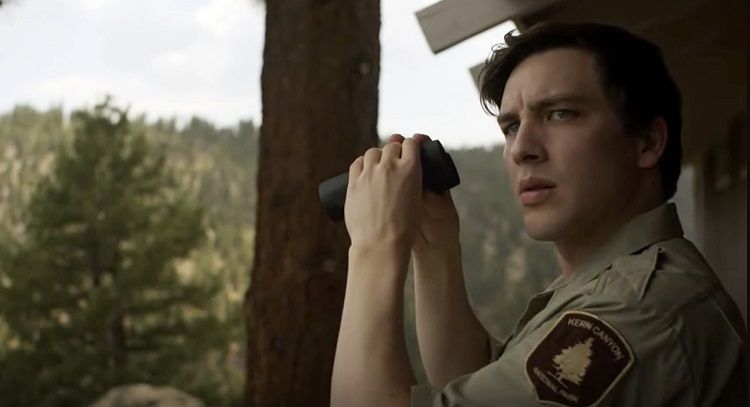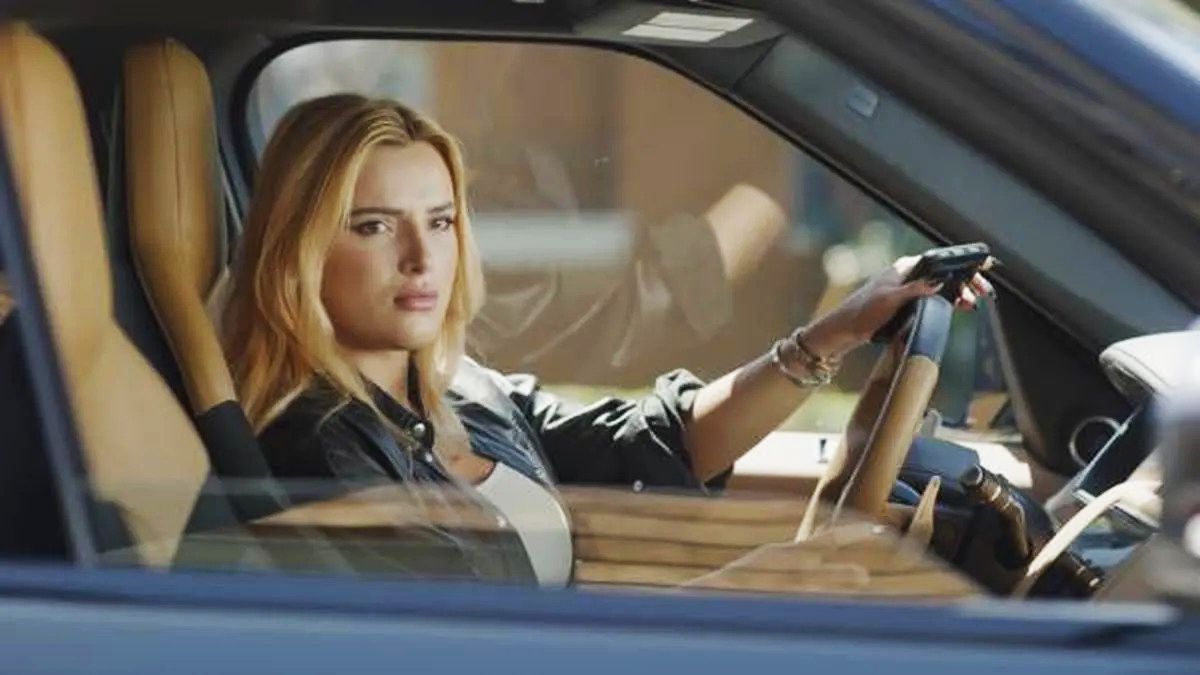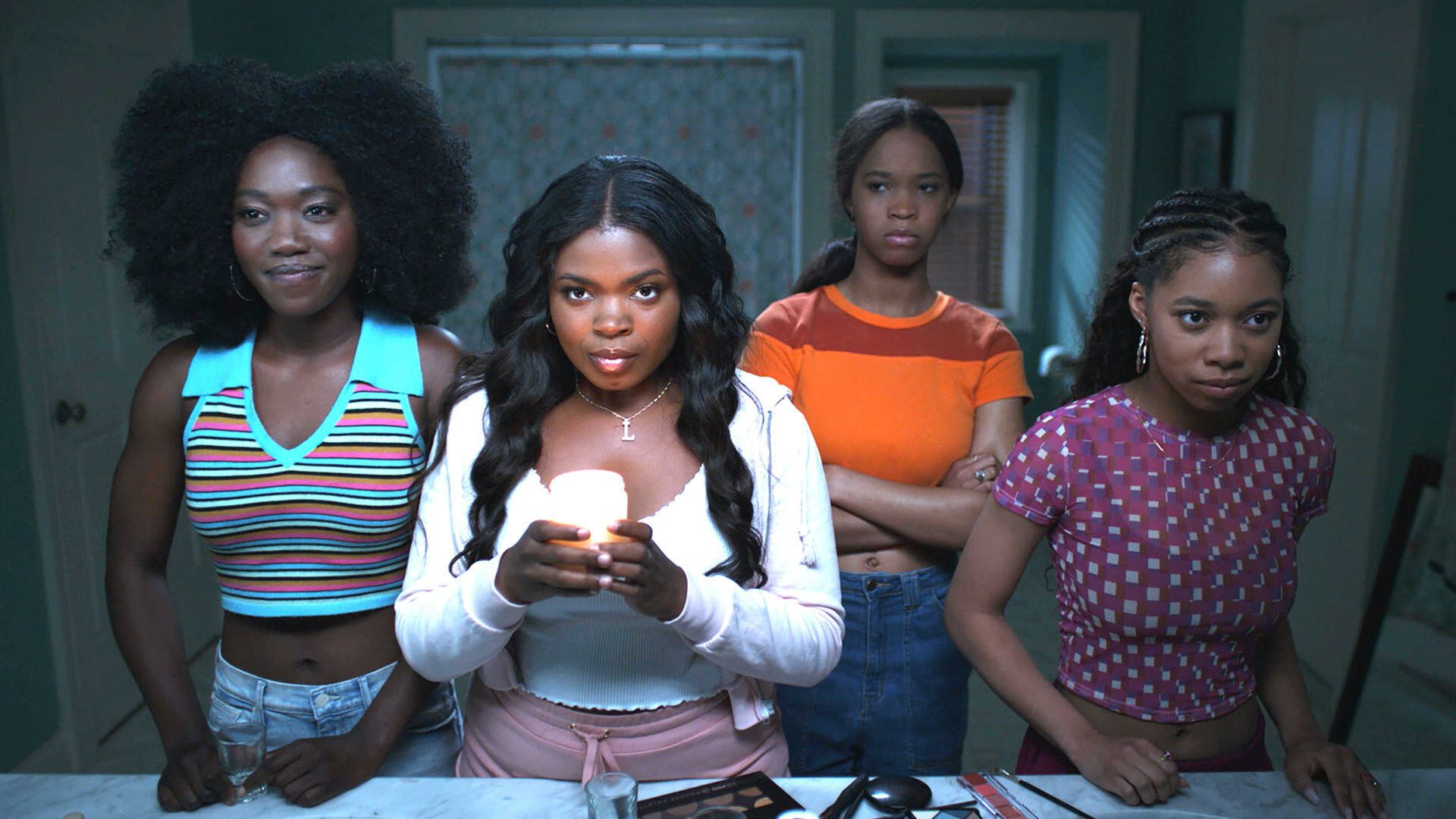Perhaps the most “American” aspect of American Horror Story and its spinoff American Horror Stories can be found in the urban legends they adapt. There's a public fascination with American folklore, and the franchise has never been shy about using it to scare their audience. After all, urban legends physically manifest many anxieties. Why was there a clown panic in 2016? Why do people believe in feral humans living in the woods? Attempts to find rational answers to real-life events with no clear resolution ends up creating more fiction than fact. In the American Horror Story universe, terrible things happen to characters when they come across these legends brought to life. And while AHS stuffs its retellings with gore and shocking moments, truth might just be stranger than fiction when it comes to what lies behind the following urban legends.
Piggy Man — American Horror Story: Murder House
Derrick (Eric Stonestreet), a new patient for Dr. Ben Harmon (Dylan McDermott), suffers from an intense phobia of urban legends. One particular one that has scared him into near total isolation is the tale of Kincaid Polk. Say “Piggy” three times in front of a mirror, and Polk will get you. How did Kincaid become the Piggy Man? He was said to wear a pig mask when killing people until he eventually got eaten alive by his own hogs. Derrick describes the Piggy Man murders as having happened at the Chicago World’s Fair ... which is where a real-life urban legend comes into play.
At the 1893 event, there was a lot of bloodshed. The shooting death of the city’s re-elected mayor ended festivities, but there was already danger blanketing the fair. Before, during, and after the event, serial killer H. H. Holmes lured victims into his home. Referred to as a “Murder Castle,” Holmes had stairs leading to nowhere and doors that opened up to a wall of bricks. There's some doubt just how intricate the house's design was, as exaggerated yellow journalism flourished in the late 1800s. While Holmes was responsible for some deaths near the fair, the overall number of murders credited to him at the time was likely inflated.
The Axeman — American Horror Story: Coven
“Esteemed Mortal: They have never caught me and they never will.” So says the infamous letter sent by the mysterious killer of New Orleans known as the Axeman. On one night in March 1919, jazz -- and only jazz -- must be played, or else the Axeman (Danny Huston) will personally greet those unlucky souls who fail to comply. The witches at Miss Robichaux's Academy decide to stop him with a handful of daggers. For decades, he stays dead. When he eventually is resurrected, the Axeman becomes the lover of Fiona (Jessica Lange).
The letter of warning this elusive figure wrote is based on the real one that was published in a New Orleans newspaper. That 1919 night of jazz really happened, too. What Coven didn't focus on was the demographic the Axeman’s victims mostly consisted of. Many Italian grocers were attacked, putting their community on high alert. Police blamed immigrant-on-immigrant crime for the murders. Confusion and discrimination plagued the investigation, and the killings ultimately went unsolved.
Edward Mordrake — American Horror Story: Freak Show
On Halloween, Edward Mordrake (Wes Bentley) arrives in green fog to add someone to his ghostly entourage. The 19th-century Mordrake was said to be an English nobleman with a second face on the back of his head, stalling advancement in society. The second face whispered terrible things, all with a demonic smirk. Eventually, it drove him to commit murder before ending his own life. The story of this man became well-known thanks to Anomalies and Curiosities of Medicine, a case study book.
In a USA Today fact check, this AHS entry basically got copied over from a 1895 article in The Boston Post written by Charles Lotin Hildreth. There’s little doubt Hildreth, a speculative fiction writer, invented Edward Mordake (not Mordrake). No actual medical diagnosis was added to the case study book. If Edward was real, his condition would not have been as severe. “Craniofacial duplication” could have been a cause, although facial movements are mirrored on both sides. So there wouldn't have been a solo demonic grin here.
The Lost Colony — American Horror Story: Roanoke
In the documentary-style My Roanoke Nightmare, a governor leaves his colony under the watch of his wife, Thomasin (Kathy Bates). A betrayal and a witch pact later, Thomasin moves the entirety of Roanoke inland. When they die, their ghosts are unable to move on. In present day, anyone who tries to live here is in grisly trouble. Vicious in life and especially in death, Thomasin orders her ghostly colonists to attack anyone she believes trespasses on their land. During a blood moon, they find it prime time for human sacrifices. Leaving the supernatural aside, the true account is just as bleak.
Roanoke was an attempt to set up a colony in North Carolina for the English. Governor John White established it, placing families on the land including his own. In 1587, he returned to England, but a naval war between England and Spain caused him to be stranded from his community until 1590. When he returned, Roanoke was overgrown from nature, no other sign of life. No one has been able to uncover what happened. The colonists might have moved inland (like in AHS) or maybe they were attacked by Native Americans distrustful of colonizers. Unlike My Roanoke Nightmare, there were definitely no blood moon sacrifices.
Killer Clowns — American Horror Story: Cult
After Trump wins the presidency, Kai (Evan Peters) sees an opportunity to use fear and rage that blisters up in the country. He leads a cult to terrorize a town, his members in full clown gear. Ally (Sarah Paulson) finds herself one of their early targets. At a supermarket, the clowns swarm her, although she fares better than some others. A couple is buried alive, locked into coffins. A news reporter is butchered live on air. Eventually, the cult leave the clown getup behind, falling into paranoia.
A year before this seventh season released, there were reports of “killer clowns” running amok across the United States. Despite the nation-wide stories, the “Great Clown Panic of 2016” was hysteria. News reports escalated it, and citizens falsified police reports. But evidence of creepy clowns preying upon children ended up being nonexistent. A similar clown panic occurred. In 1981 Boston, a school memo turned into various reports of clowns trying to kidnap kids. A collision of societal anxieties apparently made 2016 the year everyone saw clowns again.
Cursed Movies — American Horror Stories, Season 1
What causes mass psychosis that can turn moviegoers into zombified killers? Director Larry Bitterman (John Carroll Lynch) believes it's his signature touch of subliminal imagery. After his forbidden movie, Rabbit Rabbit, caused a horrible massacre at a theater, a senator has all the reels destroyed. But one survives and Bitterman gets a drive-in to hold a special screening of Rabbit Rabbit, where he knows things will go to hell once again. While cursed movies don’t really exist, the mythology attached to them do.
The Shudder series Cursed Films chisels away at the fabrications. In The Wizard of Oz (1939), no actor committed suicide in the background of a scene. The Munchkin actors did have to deal with Judy Garland pushing a toxic narrative that they were rambunctious off set. In The Exorcist (1973), stars Ellen Burstyn and Linda Blair suffered injuries to make things more believable onscreen. The truth that might be even scarier than a cursed movie is the fact that human error is more certain and destructive.
Wild Men — American Horror Stories, Season 1
In “Feral,” parents lose their young son while camping in a national park. Years later, there could be a clue the boy is alive. The is further complicated is when Cody Fern’s park ranger reveals the truth: National parks all over the United States are not for conservation purposes. They are to confine the Feral Nation -- cannibalistic wild men living in the wilderness. The end reunites the grieving parents with their missing child, only to find out their son is no longer their sweet little boy. The disappearance of a 6-year-old is an infamous cold case in the Great Smoky Mountains and could be where this urban legend was first born.
One moment in 1969 Dennis Martin was within eyesight of his father, and in the next he wasn’t. An animal could have taken the boy, being that a drought had made the animals desperate for food. Overall, the search was mishandled due to weather and the large number of people utilized. A potential witness heard a scream and saw a man running among the trees. The rumors led the Martin family to believe their son was kidnapped, and the idea of feral people being the culprits might was one result. Why do people go missing in national parks? If you listen to Cody Fern's ranger, it’s part of a twisted conspiracy.
Killer in the Backseat — American Horror Stories, Season 2
In “Drive,” Marci (Bella Thorne) is followed by a car flashing their high-beams. The pursuing driver claims to see someone lurking in Marci's backseat. But there's a twist. While there is a killer making the city’s nightlife their hunting grounds, it's actually Marci herself. The reveal flips the gender expectations associated with the urban legend. In nearly all accounts, from the Scary Stories to Tell in the Dark books to Urban Legends (1998), a woman is being followed, while the killer in the backseat and the driver flashing the high-beams are both men.
Well-known folklorist Jan Harold Brunvand writes in DeseretNews: “The suspenseful beginning of the story and the happy ending are what separate this legend from real life.” A news headline in July 1991 involved a man hiding in a woman’s Jeep before slashing her cheek with a knife. Another story, originating in 1935, is of a man who attacked a woman after hiding in the back of her vehicle, all to steal the car and money. Women who hold keys in their hands as a means of self-defense lose that protection when the keys are firmly placed in the car ignition.
Bloody Mary — American Horror Stories, Season 2
A group of girls speaks her name three times. Bloody Mary appears in a mirror, as an eerie, elegant figure played by Dominique Jackson. All the girls’ wishes can be granted if they follow through with horrible actions. Of the girls, a pair of sisters (Quvenzhané Wallis and Raven Scott) discover the past to the spirit. Bloody Mary was a slave searching for freedom and believed she found refuge at the home of Margaret Worth. It’s all a lie. Worth is working with slave owners. In order to escape, Mary commits more than one killing. The first death was justice, the other was out of rage. Mary is imprisoned in the mirror as punishment.
Queen Mary I and Elizabeth Báthory have been considered the origin of the famous urban legend. But the name-drop in this episode isn’t either one of them; instead it’s Mary “Margaret” Worth. In 1860s Illinois, Worth utilized her home as a reverse Underground Railroad. She took in escaping slaves from the South, only to then sell them back. Rumors eventually grew about Worth practicing dark magic and using her victims as part of a ritual. Then again, Worth is more or less a rumor herself. A spirit in a mirror isn’t true. Though the painful tragedy of the United States’ slave history is.

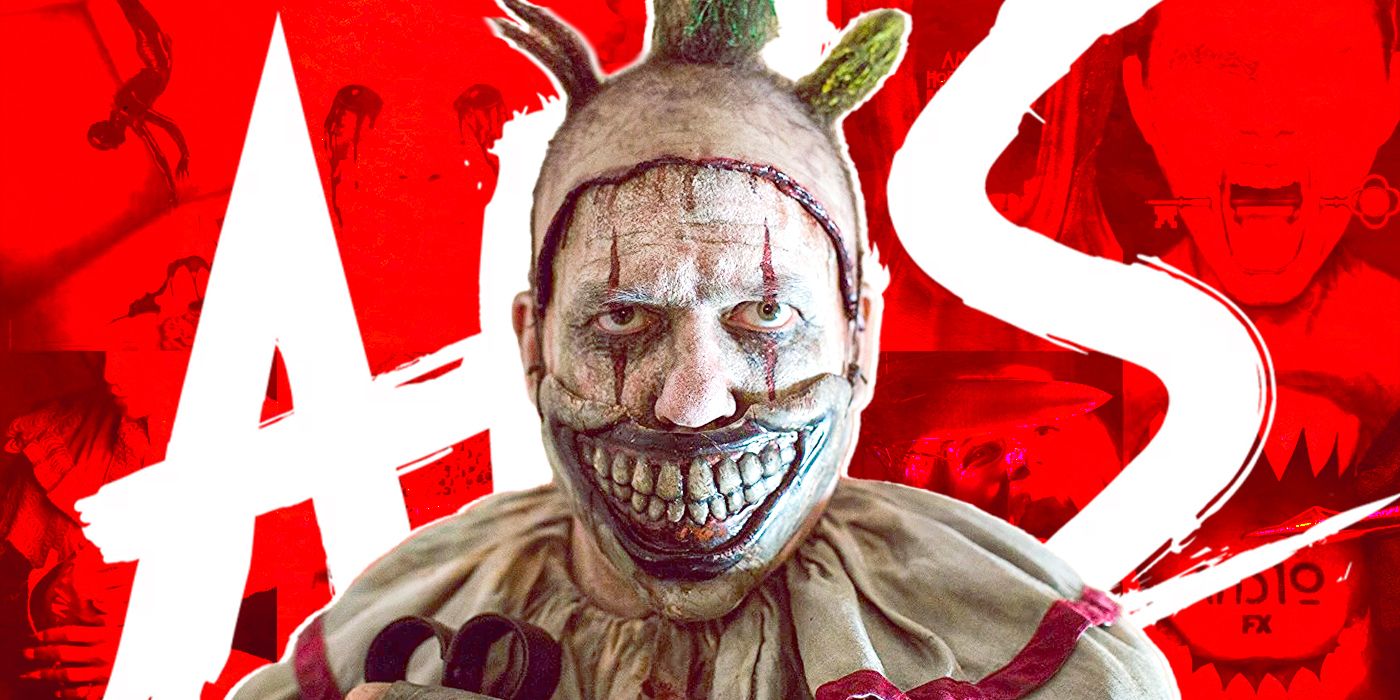
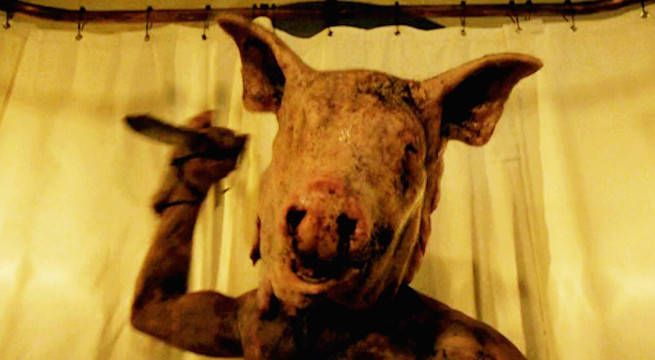
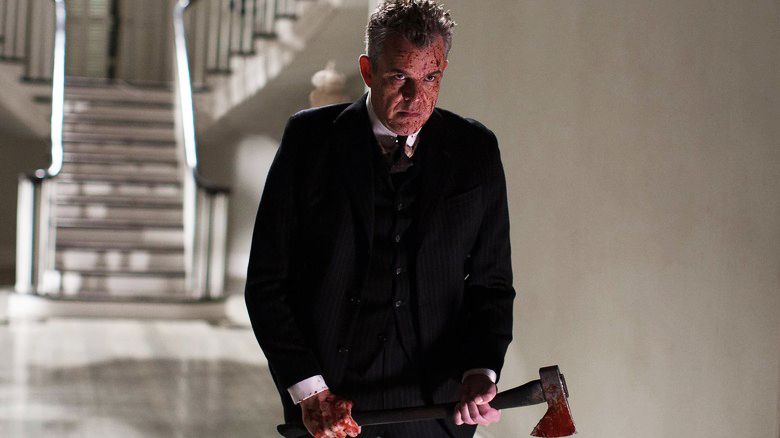
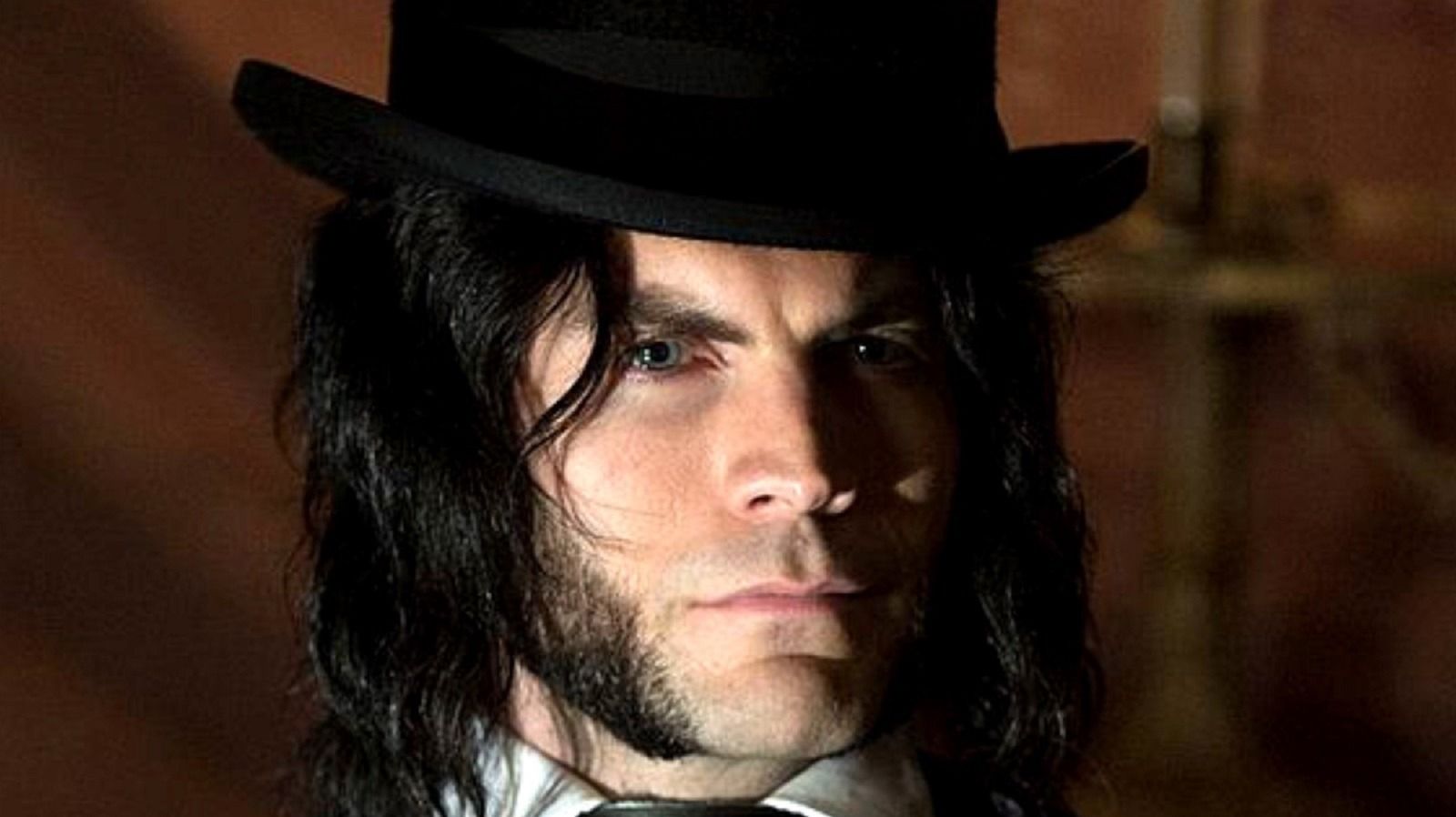
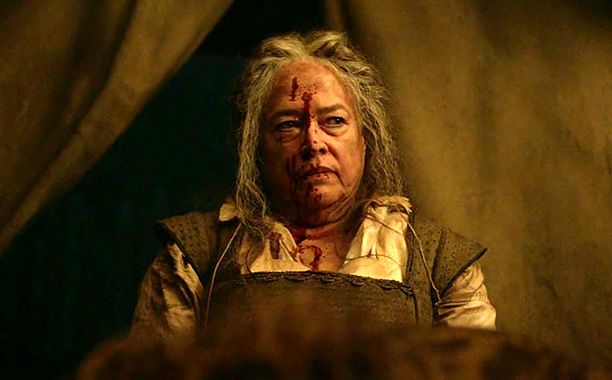
-1.jpg)
